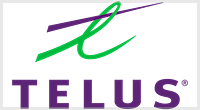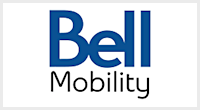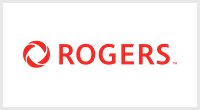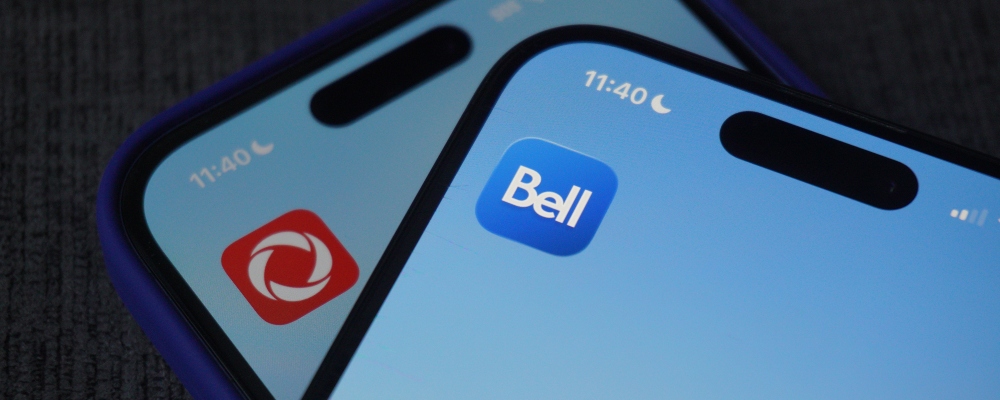
In Canada, two of the biggest carriers providing 5G phone plans are Rogers and Bell. The two compete for dominance in the country, providing services to Canadians from the West Coast to the East. But to choose between the two, it’s important to understand which carrier offers the best plans for your needs and budget.
In Canada, the Big Three (Rogers, Bell, and Telus) run a pretty robust monopoly across pricing and the 5G coverage infrastructure. When it specifically comes to Rogers and Bell, the two provide similar services from a top-level perspective. Having personally gone through in-depth hands-on testing of both carriers, we've determined which we think is better, Rogers or Bell. We've taken a look at pricing, reliable coverage, and perks, so you get the best bang for your buck.
With all of this in mind, we strongly believe that Rogers edges out Bell in one respect while Bell is the superior carrier overall.
- Rogers is the carrier to consider if you want a slightly more affordable 5G unlimited plan.
- Bell is the best option for a stronger, reliable 5G+ network and supplemental plan perks.
Let's unpack exactly what this means for you and whether a Rogers’ or Bell’s plan fits your needs and budget.
Down to brass tacks: Rogers vs. Bell 5G carrier overview
We've spent time peeling back the layers of what it's like to be a customer of both Rogers and Bell. After conducting our Rogers and Bell review, we've rated the two independently before placing the two juggernauts in a head-to-head review. Here's a look at some quick info to help you in your decision-making.
| Rogers | Bell | |
|---|---|---|
| Plan prices | $70–$100/month | $80–$110/month |
| 5G networks and speeds* | Up to 1Gbps | Up to 1.7Gbps |
| Family plan discounts | As low as $25/line | As low as $48/line |
| Perks and extras | 3 months of Sportsnet | Crave Basic subscription |
| WhistleOut rating | ||
| Shop plans | Shop plans |
The bottom line:
Both Rogers and Bell coverage operate in many similar ways. The two carriers both offer independent 5G infrastructures with total network coverage accessible to over 95% of the Canadian population. However, both carriers charge a premium for 5G access and a sizable data allotment. With this in mind, however, Rogers' entry-level plan is a bit more cost-effective while including 100GB of 5G data as well as Canada-wide talk and text support and HD streaming quality access. To get three months of Sportsnet+ for free, you'll have to be on Rogers' higher-priced Ultimate plan.
When we look at Bell, the total monthly cost is slightly higher. However, with that, Bell's network supports a wide cascade of 5G+ coverage across Canada, targeting many communities outside of the obvious metro cities. Additionally, you'll get the same Canada-wide talk and text perks, but Bell also throws in international texts as well. Unfortunately, HD streaming and a Crave Basic subscription sit locked behind Bell's most expensive Elite 250 plan, so you'll have to settle for SD quality streaming otherwise.
Reviews and ratings: How we scored Rogers and Bell
At WhistleOut, we take a look at carriers and their services across five key metrics. This includes price, value, speed, coverage, and customer service. Each metric is rated out of five stars, which are averaged to calculate the overall score.
- – Price: 3 out of 5
- – Value: 4 out of 5
- – Data speeds: 3.5 out of 5
- – Coverage and network reliability: 4.5 out of 5
- – Customer service: 2 out of 5
Rogers' rating details
I've been a Rogers customer for most of my adult life. I know all the frustrations when it comes to customer service, as well as the reliability of Rogers' network. I still have flashbacks to the 2022 mass outage. However, I've always found myself content with the total value proposition of Rogers, including its data allotment, 200mbps download speeds, and the coverage within my area (downtown Toronto). With this in mind, however, I'm well aware that many mobile virtual network operators (MVNOs) offer cheaper plans. You can check out our in-depth experience with Rogers' plan and see the results after strenuous testing.
Bell's rating details
Bell's plans are slightly more expensive than Rogers, but the value does warrant the pricing in some metrics. For instance, Bell's 5G+ coverage exceeds that of Rogers in many areas in Canada. The data speeds can hit highs of up to 1.7Gbps, but will be relative to your location. Even throughout the month of personal tests, I can see how gatekeeping HD streaming to high-priced plans won't sit well with all customers.
After a full month of testing Bell's service, we compiled a robust review of the carrier's coverage and 5G speeds, where you can see how our testing went.Rogers vs. Bell price comparison
Both carriers offer three core plans at similar price ranges, with many options falling under $100/mo. Rogers supports its Essentials, Popular, and Ultimate plans. Essentials is the most entry-level wireless plan from the carrier, at $70 per month. Ultimate is the most expensive plan—priced at $100/mo.
Bell, similarly, gives three plans to choose from, albeit at slightly higher prices. Starting things out, Bell's Elite 100 plan begins at $80/mo. The Elite 250, the highest-tier plan, is available for $110/mo.
Across its various plans, the difference in pricing between Rogers and Bell comes down to $10/mo. in costs.
Compare specific Rogers and Bell plans
Check out the postpaid unlimited plans offered by Rogers and Bell below:
| Rogers | Bell | |
|---|---|---|
| Plan | Essentials | Elite 100 |
| Mobile Data | 100GB | 100GB |
| Coverage | 5G | 5G+ |
| Speeds | 250Mbps | Up to 1Gbps |
| Perks and extras | HD streaming, 3% cash back with a Rogers Red credit card |
Unlimited international texting |
| Price | $70/mo | $80/mo |
| Shop plans | Shop plans |
Premium unlimited data plans
Frustratingly, Rogers and Bell operate their unlimited data plans to nearly an identical degree. Both carriers begin offering unlimited plans with 100GB of monthly 5G data. Once you've exceeded this amount, the two carriers will throttle service down to around 512Kbps. If you need a minimum of 100GB of data to use on your smartphone or hotspot to a device, both carriers can fulfill this. The same goes for higher data allotments. Rogers and Bell both offer 175GB and 250GB plans as well. This gives a bit of flexibility on data allotments within a single carrier, but not much runway to compare one carrier to the other in this regard.
Where we're able to compare the contrasts between the two major carriers comes down to the pricing and the minutiae of the plans. For instance, Rogers' Essentials plan starts at $70/mo if you're willing to bring your own device. With this, you get access to the 5G network as well as Canada-wide talk and text, as opposed to Bell's $80 Elite 100 on a BYOD term. Bell also offers 5G access with Canada-wide talk and text. However, its plan comes in slightly more expensive, likely to compensate for its total 5G network coverage.
If you're looking to save a bit of money, you can use Autopay to get a $10 credit with either carrier. If you're an existing internet customer or are thinking of bundling services, you can also receive additional savings. For instance, Bell's Elite 100 can get as low as $55/mo. when bundled with internet service and using Autopay.
Plan perks
Both Rogers and Bell offer nominal perks with their unlimited data plans. In both cases, customers must sign up for the most expensive plans to unlock what we consider the most valuable perks. With this in mind, Bell takes the cake when we look at plan perks. As someone who values streaming content, Bell throws in a Crave Basic subscription with its Elite 250 plan. This feels like a no-brainer for anyone who enjoys HBO content like House of the Dragon or The Last of Us. Bell also includes a one-year subscription to Perplexity Pro, an advanced LLM pro that provides real-time answers to search queries. Unlimited international texts are also included with Bell.
Here's a complete list of Bell's perks on the Elite 250 plan:
- Unlimited calling and texting in Canada, the US, and Mexico
- Unlimited international texting and minutes for calls in 27 countries
- Crave Basic subscription
- One year of Perplexity Pro AI
Rogers, on the other hand, offers 3% cash back value when using a Rogers Red credit card on each of its plans. Keep in mind, though, that interest rates on the Mastercard range from 20.99% to 25.99% so the benefits may not outweigh the possible higher rates. Rogers also includes a three-month free subscription to Sportsnet+. Unlike Bell's inclusion of Crave Basic, Rogers' streaming perk isn't perpetual. Rogers also caps its international texts to 2,000/mo. unless you sign up for the Popular or Unlimited tier.
Rogers vs. Bell family plans
Both Rogers and Bell offer discounts on their family plans. As an incentive to increase the number of lines on a plan, both carriers begin to slash the prices of their monthly costs for each added line on the account. For the most value and benefits, customers will have to have four or more lines on one account.
When looking at the family plan pricing, it's quickly obvious that Rogers' cheaper priced plan structures edge out Bell once again. With a four-line family plan on the Essentials tier, you can pay as little as $25/mo. for your fourth line and after. But if you want to split the cost of four lines equally, you’ll come out to roughly $45 per line. Customers can also mix and match tiers on each line, though pricing will be reflected in which plans are chosen.
You can see a more in-depth look at discounts per number of lines in our breakdown of Rogers' family plans.| Plan | First line | 2nd line | 3rd line | 4th line+ | Total for four lines |
|---|---|---|---|---|---|
| Essential | $70/mo | $50/mo | $35/mo | $25/mo | $180/mo |
| Popular | $80/mo | $60/mo | $45/mo | $35/mo | $220/mo |
| Ultimate | $100/mo | $80/mo | $65/mo | $55/mo | $300/mo |
Similarly, Bell offers family plan pricing as well, but costs only go down to $48/mo with a four-line plan. Bell also allows customers to mix and match tiers on each line.
Here’s a table of Bell’s family plan discounts and prices for each line:| Plan | First line | 2nd line | 3rd line | 4th line+ | Total for four lines |
|---|---|---|---|---|---|
| Elite 100 | $80/mo | $62/mo | $55/mo | $48/mo | $180/mo |
| Elite 175 | $90/mo | $72/mo | $65/mo | $58/mo | $220/mo |
| Elite 250 | $105/mo | $87/mo | $80/mo | $73/mo | $345/mo |
When looking at both carrier's Rogers is the clear winner when it comes to its family plan offering. With costs as low as $25/mo. for your fourth line and after, Rogers makes a smart choice for anyone wanting to save on costs.
When looking at the total annual costs of a four-line plan between the two carriers, the price discrepancy between Rogers and Bell is abundantly apparent.
4 lines of Rogers' Essential plan ($180/mo) x 1 year = $2,160 annually per family
4 lines of Bell's Elite 100 ($235) x 1 year = $2,820 annually per family
Throughout this comparison, we've been looking at 4-line plans. The reason for this is that neither carrier offers additional value when going beyond the 4th line. So, a fifth or even sixth line will retain the same price point as the fourth line under Rogers or Bell.
Rogers vs. Bell mobile network coverage and speeds
In Canada, 5G network coverage is becoming more and more accessible. Across both Rogers and Bell, 5G connectivity is available under each carrier's core plans. Rogers has a well-established 4G LTE network coast to coast and is continuously building its 5G infrastructure. That said, Bell's network is considered the fastest in Canada, with 5G+ coverage available in many metro areas and even more rural spaces.
4G LTE coverage
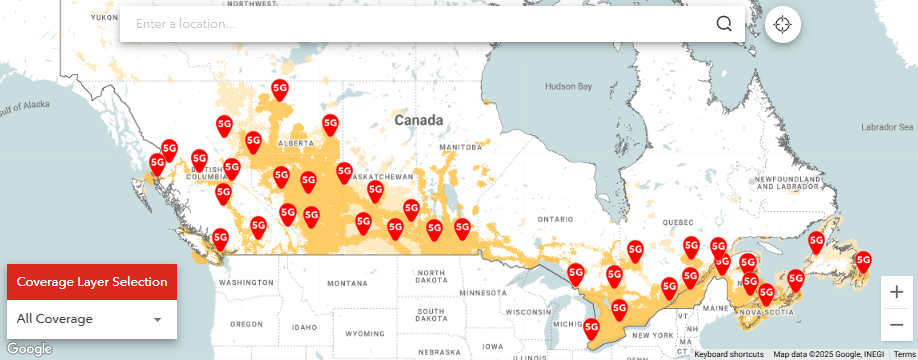
Image: Rogers
Rogers has an expansive 4G LTE network that reaches 97 percent of the country's population. The 4G LTE network provides download speeds of upwards of 100Mbps, which, for many Canadians, will be suitable for checking emails and scrolling through social media.
When looking at the 5G network from Rogers, access to speeds of up to 250Mbps typically falls within the areas of major metro cities like Toronto, Vancouver, and Montreal.
Having been on the Rogers network for quite a while, Rogers' 5G connectivity rarely fails to be reliable. However, the carrier did experience a country-wide outage in 2022, where 12 million Canadians were left without wireless and hard-wired services for around 15 hours.
Bell coverage map
Bell is largely considered to have the fastest 5G network in Canada (sharing towers with Telus). The carrier's 4G LTE network spans 99% of the population, offering access to the largest 4G network in the country. However, it's Bell's superior 5G network that's worth discussing.
Bell's 5G coverage is growing at a far more rapid rate than Rogers' network in 2025. Outside of the metro cities, you can find 5G+ supported in multiple areas; the infrastructure provides 5G connectivity to some smaller, more rural areas. This largely includes Southern Ontario and Quebec, where 5G signals are fairly consistent.
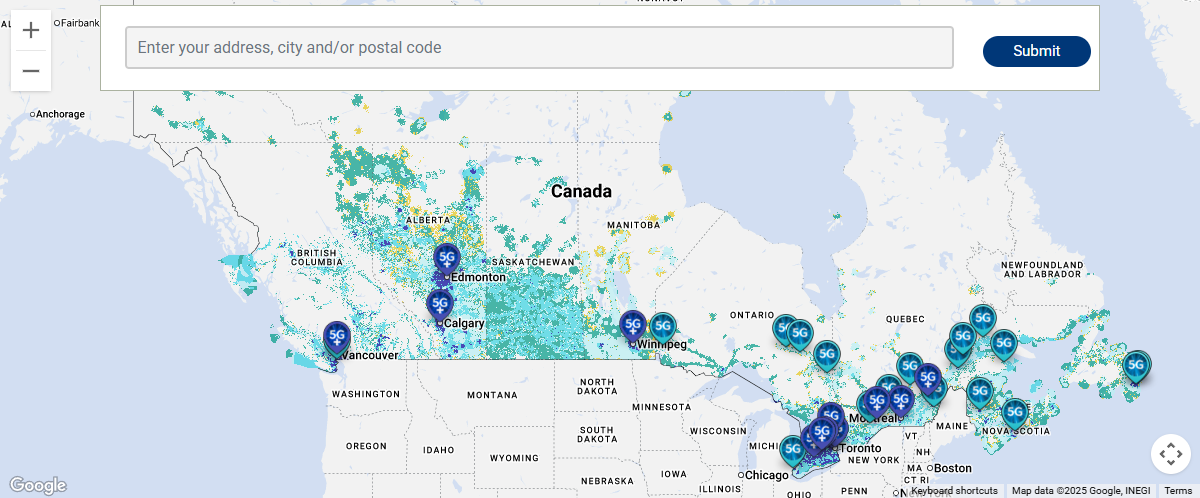
Image: Bell
Bell's 5G+ services are generally more reliable and faster than Rogers'. In recent testing, it was common to clock 237Mbps in more congested metro city areas. Though Bell does state its infrastructure can support up to 1.7Gbps under the best circumstances. With speeds like this, Bell's network is primed to support customers who upload and download video files, scroll through TikTok videos, and watch Instagram Reels.
Although minor outages have been experienced on the Bell network (a recent one hitting Ontario and Quebec in May), Bell customers haven't faced major issues in many years.
Customer service
Interacting with customer service is often a chore. No matter the carrier, if you have to get on the phone with customer service, it's probably not at the top of your to-do list for the day. So, it's important to look at Rogers and Bell and see which company makes those dreaded calls a little bit better and more efficient.
Overall, I think that Bell provides a better customer service experience. Recently, I contacted Bell's customer service line to test the efficiency and usefulness of the agents. While Bell supports its MyBell app for many things, I often like to speak to a human when it comes to billing and support. During the process, I spent about 15 minutes on hold, which was notably less than the 20+ minutes I spent on hold with Rogers weeks prior. Bell's customer service was also ready to assist and answer my questions once I got through.
Rogers, on the other hand, offered a far more frustrating experience. After a lengthy amount of time on hold, the representative was keen to point me in the direction of the MyRogers app instead of showing an interest in helping me. By the time my call was complete, I felt like I was an inconvenience more than a paying customer.Bottom line: Is Rogers or Bell better for you?
As we've identified throughout our comparisons, Rogers and Bell offer similar plans, service, and perks in most cases. So, to suggest one or the other, it'll come down to what you're looking for out of your phone plan.
If you'd like to save a bit of cash each month on your monthly plan, Rogers is the carrier for you. And you can save even more if you're looking to have additional lines on your plan. Rogers' 5G coverage is great for those living in major metro cities. However, Canadians in rural areas may still be waiting for the infrastructure to expand. So make sure Rogers offers 5G in your area before you commit to a plan for high speeds. Rogers is also lacking when it comes to plan perks outside of a meagre 3-month subscription to Sportsnet+ on certain plans.
On the flip side, Bell is generally more expensive but offers faster and wider 5G coverage across Canada. Bell also has the largest network of the two, accessible to 99% of the population. So, if reliable network access is your top priority, Bell is the carrier to consider. The carrier's plan includes some additional perks that make it stand out against Rogers, like access to Crave Basic. While you may be paying a bit more for your monthly plan, you'll be given some nice benefits to soften the blow to your wallet.
Switch to Rogers or Bell
If you've found this guide helpful, start looking at specific phone plans from Rogers and Bell to find one that fits your needs, budget, and lifestyle. And if you decide to swap, we can also walk you through how to swap carriers while still keeping your existing number.
How WhistleOut rates cell phone plans
WhistleOut evaluates phone plans based on the following criteria:
- Price & value: Not all cheap plans are “bad,” and not all expensive plans are worth it. We look at everything a plan includes and compare it both to other plans from the same carrier, as well as similar plans from competitors in the market, to determine whether the value is consistent with the price.
- High-speed data: Also called “premium” data, this is how much data you get at full 4G/5G speeds before they can or will slow down. The more guaranteed high-speed data the plan includes, the better experience you’ll generally have—but there’s also usually a limit to how much you actually need, and we ensure that you’re not overpaying for data that will go unused.
- Coverage & network reliability: The breadth of each carrier’s 4G LTE and 5G networks determines your reception and service. Particularly in the case of 5G, some carriers offer far more robust coverage than others, which affects how their phone plans perform in different parts of the country.
- Plan extras and perks: In addition to the basics—talk, text, and data—some plans throw in freebies like hotspot allowances, cloud storage, entertainment subscriptions, or service discounts.
Our mobile experts tested Rogers and Bell for at least a month each, in addition to leveraging proprietary data and real-world customer feedback. We compared the two carriers by analyzing their coverage, cost, and plan options. We considered plan-specific elements, including perks, premium data allowances, and customer service. After performing hands-on testing and extensive research, we picked the best carrier we felt met the needs of most people. In some areas, each carrier stacked up equally. We only compared Rogers versus Bell; no other carriers, big or small, were included in our comparison testing.
Visit our guide to choosing a phone plan to learn more about cell phone carriers and plans, and find the one that best meets your specific needs.FAQs
Related Articles
Find Better Phones and Plans
Hundreds of cell phone plans unpacked. All the facts. No surprises.





















